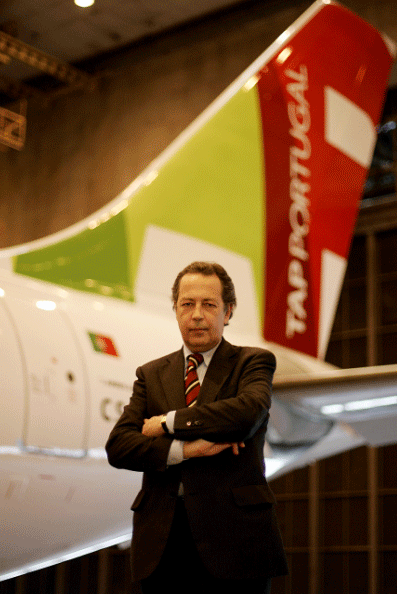Brazilian acquisition gives TAP Air Portugal's maintenance arm room to expand as parent airline's growth squeezes Lisbon capacity
Like many European MRO businesses, TAP Air Portugal's maintenance department is shifting focus from airframe heavy maintenance to higher-margin areas such as component and engine maintenance.
"Our main interest is full-maintenance contracts," says Jorge Sobral, director of TAP Maintenance & Engineering, which draws about 50% of its maintenance volume from the parent airline and the rest from third parties. "We need the airframe business as it's interesting from the point of view of a package. Taken in segments, it is not that interesting."
TAP in 2005 acquired a controlling interest in VEM, a Brazilian MRO that rose from the ashes of the Varig bankruptcy. TAP M&E uses VEM's facilities to achieve airframe volume growth impossible at its capacity-constrained Lisbon facility, at a lower labour cost.
 |
|---|
© TAP Air PortugalSobral: confident, despite consolidation trend |
Dealing with a lack of space will be an inescapable reality until a decision is taken on where and when to build a new airport in Lisbon - the subject of an ongoing saga. "We started hearing about that at least 30 years ago," says Sobral. "It wouldn't amaze me if it took [another] 20 years or so."
With the situation as it is, TAP M&E struggles to accommodate new business, as the parent airline fleet is growing rapidly. "We are forced to refuse some contracts," says Sobral. The acquisition of VEM has provided some relief. For example, some work for Canadian carrier Air Transat has been transferred from Lisbon to Rio de Janeiro, where an Airbus A310 line has been added.
Alongside its own A310 line, TAP M&E offers airframe maintenance capabilities on the A300, A320 family, A330/A340, Boeing 737 family and Lockheed L1011, and component capabilities across the same programmes. Engine maintenance capabilities span the Pratt & Whitney JT3D and JT8D, Rolls-Royce RB211-524B4/D4 and CFM International CFM56-3, CFM56-5A/-5B/-5C and CFM56-7B.
BETTER MARGIN
"On the components there is a better margin - not as good as engines, but much better than on the airframe side," says Sobral. "Also, there is a need for us to keep capability in-house, to support the TAP fleet." This commitment to the parent airline, which it serves on a cost-price basis, will spur TAP M&E to develop capabilities on the A350 XWB. In November 2007 TAP committed to a firm order for 12 A350 XWBs, taking three options.
In the meantime, there is a global economic crisis to navigate. As Sobral puts it: "When things in the airline business go not so well, you feel that in MRO a few months later."
He is confident TAP M&E can retain its niche, despite the industry trend of consolidation. "We've been quite successful, as an airline and as an MRO, in terms of making money," he says. "Growth has been around 7-8%, not considering TAP. We [expect] this year to have a record increase on last year: around 15%. We'll be here for a significant period of time."
Source: Flight International
















